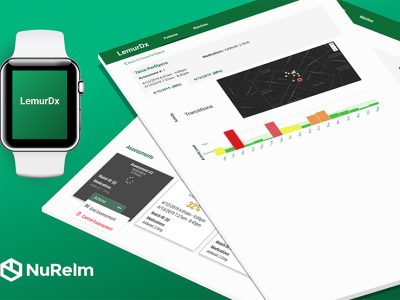Related People
Mayank Goel, Karan Ahuja, Riku Arakawa
Smartwatches Could One Day Help Diagnose ADHD in Children
CMU Research Shows LemurDx Dashboard Gives Doctors Clearer Risk Assessment

Smartwatch sensor technology developed by Carnegie Mellon University researchers could help doctors make more accurate diagnoses of attention deficit hyperactivity disorder (ADHD).
ADHD affects about 5% of children and teenagers across the globe. Children as young as 4 who have the neurodevelopmental syndrome can present with symptoms of inattentiveness, impulsivity and hyperactivity.
"One of the challenges with diagnosing hyperactivity in children is the subjectivity that children don't really have a say in," said Mayank Goel, and associate professor in the School of Computer Science's Software and Societal Systems Department (S3D) and Human-Computer Interaction Institute (HCII). "The diagnosis is mostly based on subjective reports from parents and teachers and limited observations that a professional might make in the clinic."
Past research collected motion data and tracked a child's movements throughout the day or during sleep, but doctors need more information to gauge a child's risk. With that in mind, Goel's team collected data over the course of more than five years from about 70 children, including roughly 30 who had an ADHD diagnosis. Children came into the clinic for an initial visit, then received a smartwatch that they wore for two to seven days to collect movement data, location and heart rates. The team also asked parents to maintain a diary of their children's activities in half-hour increments that they recorded at the end of each day.
The researchers then developed a machine learning model that combined the human activity recognition data from the smartwatch with the parent-provided activity labels to provide the context needed to generate an objective risk score. When the model went on to predict a child's activity instead of relying on the parent labels, it was 82% accurate.
"Context is really important, and there's a chance that we might not have to ask parents to provide that context and could make a free automated system in the future," said Riku Arakawa, an HCII Ph.D. student who worked on the research.
The team found that the children's physical activity levels were very similar, except for subtle variations, making understanding context paramount.
"For the majority of the day, a control child was very similar to a hyperactive child, so we really needed to look at the context," Goel said. "Our goal is to help the doctor, parents and teachers work together in determining problem areas."
An app interface called LemurDx will use this passive sensing approach, including collected data and parent or teacher input, to create a hyperactivity risk score from the machine learning model Goel's team developed. Eventually, the team would like to use LemurDx to add real-time parent feedback to the sensor's data collection. Future work may also include studying how the system could be useful for effective treatment and management of ADHD, Goel said.
"It's a neurological disorder, so it doesn't go away. It's something that has to be managed," he said.
The research, funded in part by a grant from the National Institutes of Health, included Oliver Lindhiem, an associate professor of psychiatry and pediatrics at the University of Pittsburgh, who developed the project idea. Pittsburgh tech startup NuRelm worked with the team to develop the smartwatch application and dashboard. They also examined future commercialization of LemurDx.
"Once you have that machine learning model, how do you package it all together into a system that sits on a wearable device with data that goes into some server, ensuring that everything remains HIPAA-compliant? All those nitty-gritties of what happens when the technology gets outside the lab — that's what NuRelm has been focusing on," Goel said.
The team presented its research, "LemurDx: Using Unconstrained Passive Sensing for an Objective Measurement of Hyperactivity in Children With No Parent Input," at the ACM's International Joint Conference on Pervasive and Ubiquitous Computing (UbiComp) and International Symposium on Wearable Computing (ISWM) earlier this month in Cancun, Mexico.
Other research contributors included Sam Shaaban, CEO and senior architect at NuRelm; Kristie Mak, a project analyst with the UPMC Center for High-Value Health Care; HCII Ph.D. student Karan Ahuja; and NuRelm intern Gwendolyn Thompson.
Research Areas

